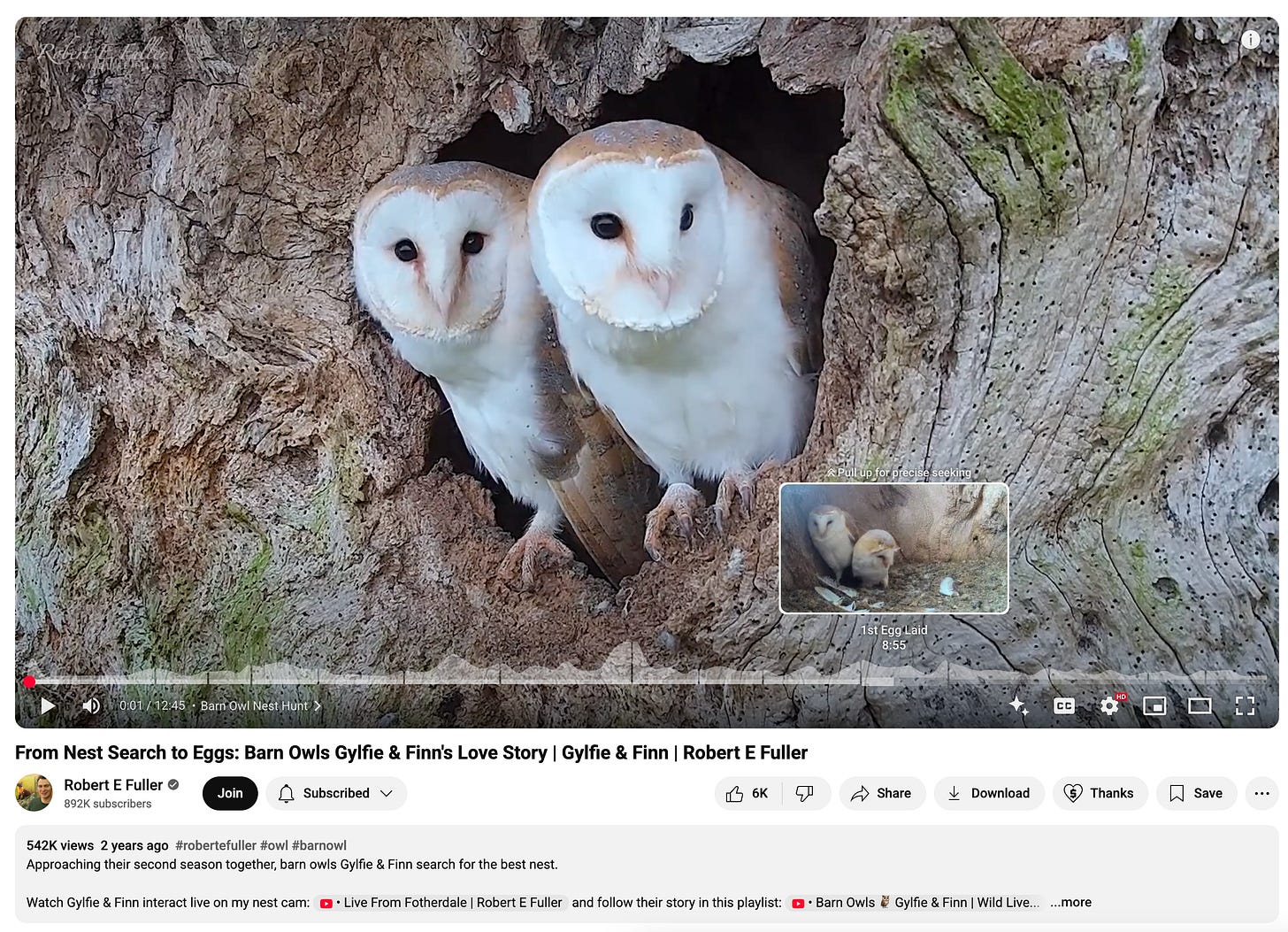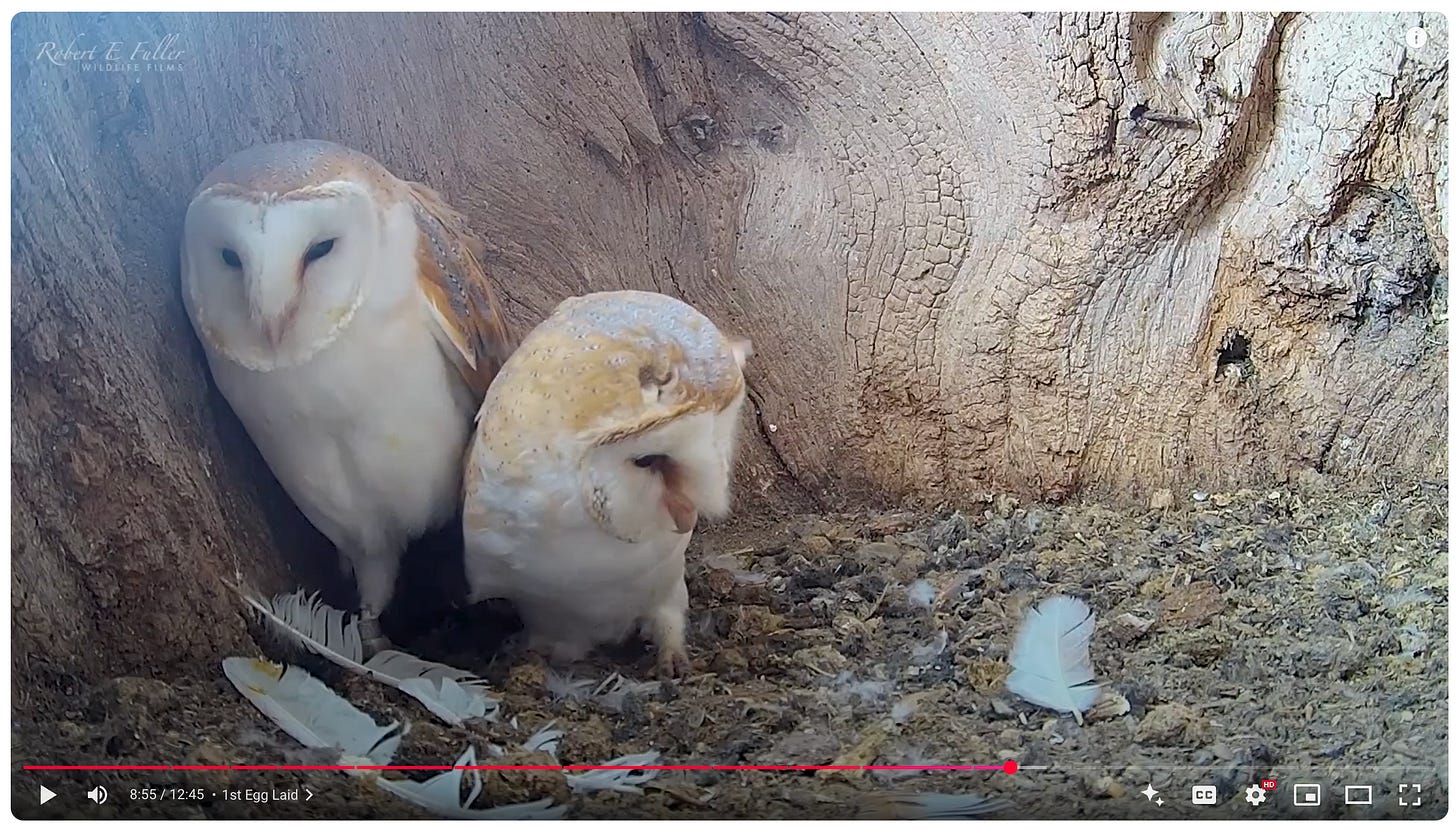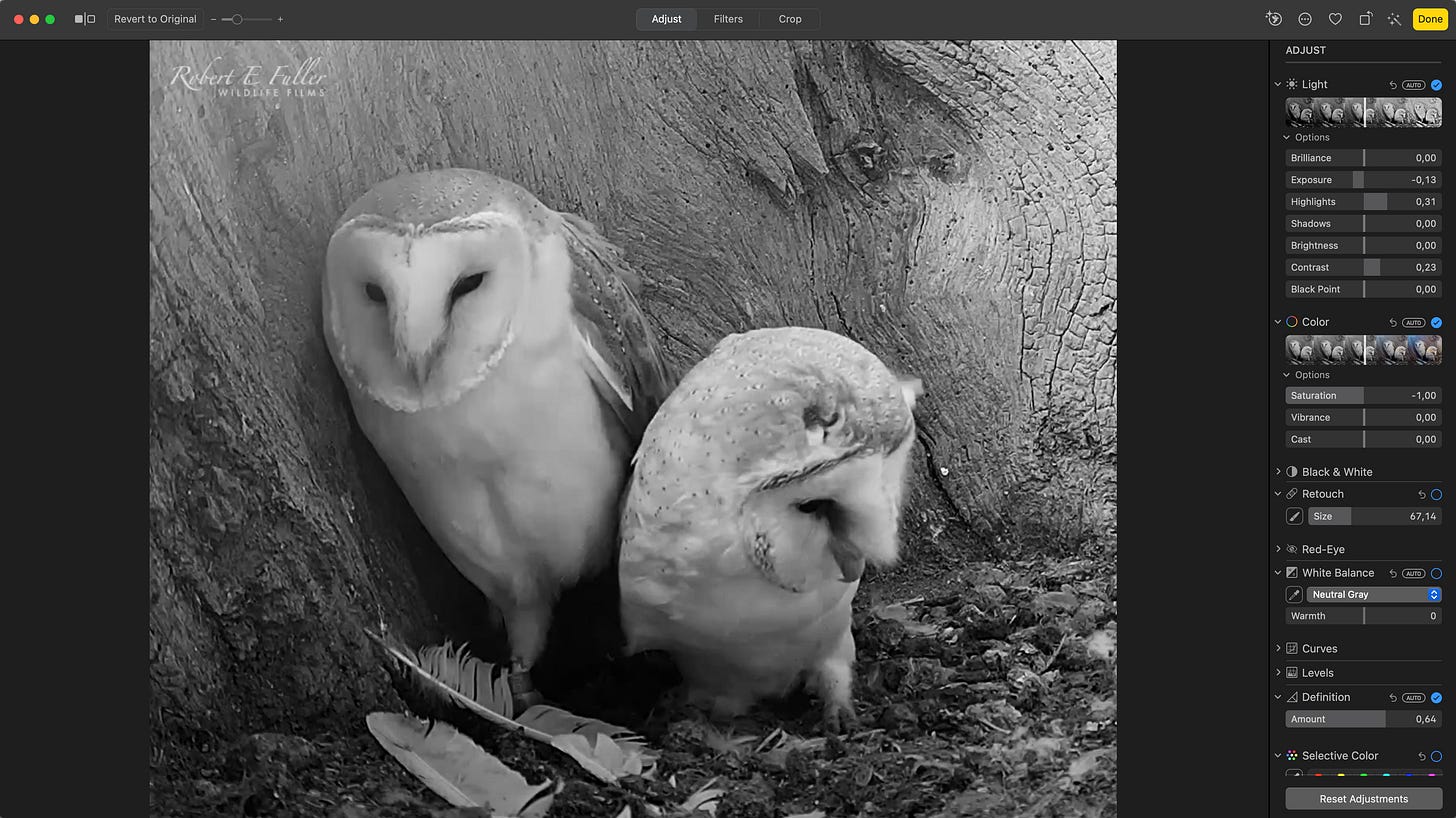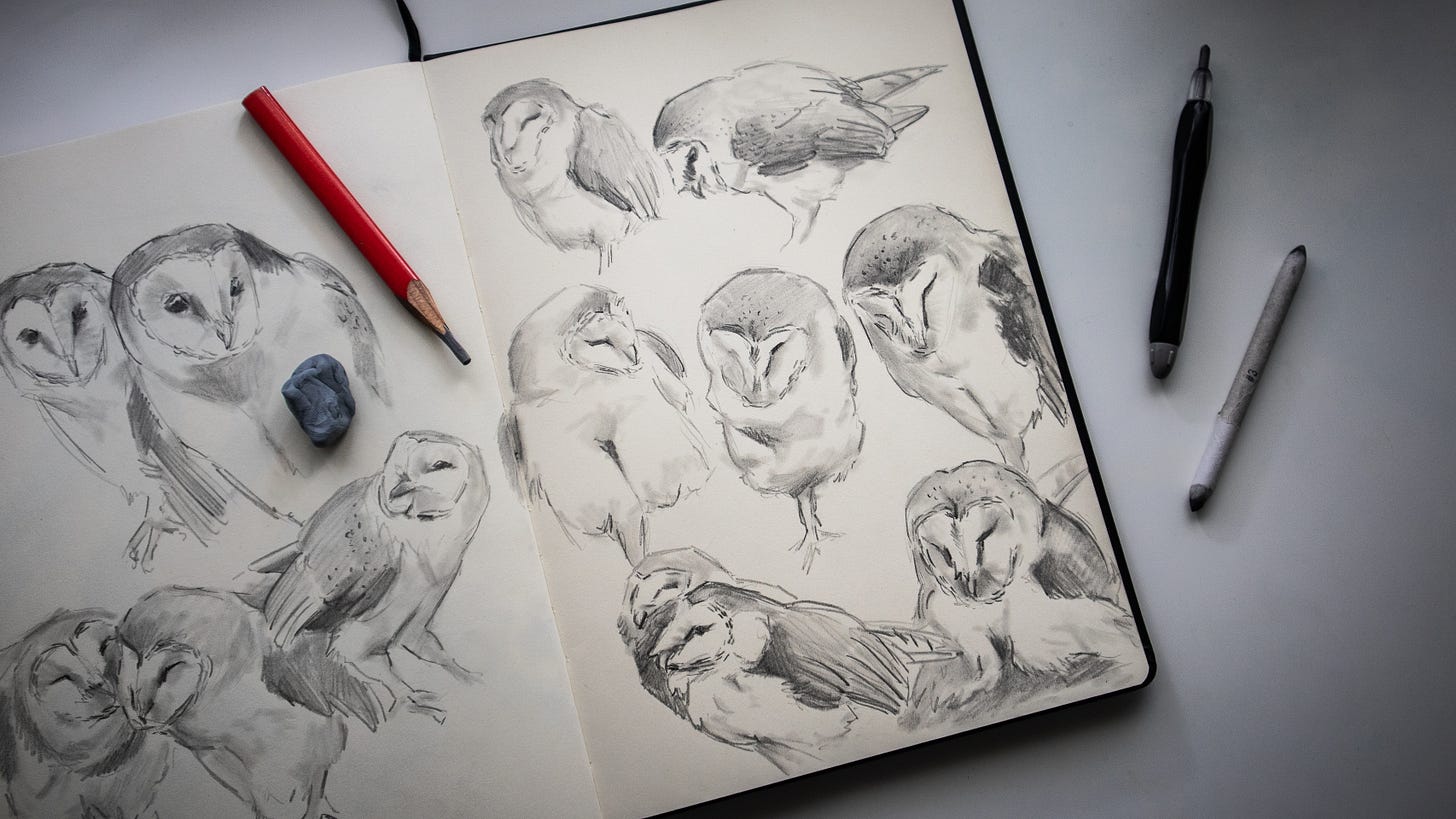Why I prefer sketching from videos
My little guide on how to use video references in your art practice.
For those of us who use references in our art practice, photo references are pretty standard. For good reason: They’re convenient, and readily available from a variety of places online, either paid, royalty-free or perfectly legit to use for private sketchbook practice.
I rely heavily on photos for my portraits and landscapes. But for my main subject - animals - I’ve grown increasingly bored with using photographs, and am gravitating more and more towards using video references. Here’s why:
1. Originality
You’d think there were enough good reference photos online, in order for artworks to not be immediately recognizable. But I see the same references drawn and painted over and over again by artists online - beginners and professionals.
And I’ve done it myself. Most of my early drawings and paintings were from popular pins on Pinterest. I’m usually itching to get drawing or painting, and honestly couldn’t care less if a thousand other artists have used the same reference. And I’m often creatively lazy as well: If I love the photo, I’m mostly going to use the same composition and colors in my painting. My work isn’t photorealistic and will never be an obvious copy of someone else’s work. But still, could I have taken more creative liberty with my references in the past? Absolutely.
While there are still plenty of great references to be found on Pinterest (if one dares to wade through the deluge of AI generated crap to get to it), it just feels more fresh and exciting for me to source my references in a more organic way.
2. Artistic freedom
With a reference photo - especially a really good one - so much of the creative decisions have already been made by the photographer. This is their composition, their lighting choices, their focal point, their color grading. Even though I like to think I’d be able to take a great photo and completely do my own thing with it, I mostly don’t. It’s a skill I’m very much still practicing.
But when working from a video, I often have no choice but to take creative liberty. The video quality might be a little grainy, the lighting situation not optimal, I can’t make out all the details of an animals face… That’s an opportunity, actually. I get to use my creative muscles. I get to make decisions.
Starting with… which stills to use. When you work from a reference video, you have thousands of different stills to choose from. This is my first opportunity to express my creative voice, in picking out the compositions and poses that speak to me. I love to draw and paint animals that are actively doing stuff, not just posing for the camera. And I usually find way more interesting and dynamic poses in videos as opposed to photographs.
3. Practice
Finally, sketching from videos is great practice for sketching from life. One of my dreams is to one day be able to paint birds directly from life the way one of my role models Darren Woodhead does. I’m in awe over that ability, especially with animals as fast-paced as birds. 😅
What better way to work up to that challenge than sketching from videos? I can start on easy mode by putting the playback speed down low, and then gradually working my way up to real-time.
How I find (and work with) reference videos
I follow a lot of wildlife photographers, videographers, birdwatchers and zoologists on Instagram and YouTube. People who frequently share videos of animals in the field.
This is a treasure trove. Each video gives me so much to choose from, and the chance that another artist have picked that very same frame is next to zero. There also isn’t the same risk of copyright infringement. All I’m doing is using the pose of an animal in a certain second of the video. It’s not immediately recognizable as someone else’s creative work the way a photograph is.
What I like to do is first “scrub” through the video (moving the mouse along the timeline to preview the video), to see if there are any interesting frames conducive to art.
I’m specifically looking for:
Strong lighting conditions (A clear sense of light and shadow)
Good enough video quality (So I can make out the details I need)
Interesting poses and angles
When I find a frame I like, I pause the video and take a screenshot. (Most computers have a keyboard shortcut for that. On my Mac it’s: Shift + Command + 4. I can then draw a box only around what I want to capture, and it’ll be saved to my Desktop. Quick and neat.)
I then like to import the still image into a photo editing software (I use Apple Photos), and tinker with the colors, contrast and clarity. I can also edit details and get a lot more creative with the image if I want to.
In this case, I’m just using the stills for drawing practice so I turn the images black and white to see the shadows and highlights more clearly and not get distracted by the colors.
For a usual sketchbook spread, I might go through 6-10 of these stills, all from the same video. It’s one of my favorite ways to relax and practice. I can then use these sketches as inspiration when planning my watercolor paintings.
To be clear: There is nothing wrong with working from photos. I still do it. It’s far superior in many instances, and for many subjects. My purpose with this post is just to widen your horizons and expand your toolbox, especially if you draw and paint animals like me.
In my latest YouTube video below, I’m sketching some gorgeous barn owls from a video by one of my favorites, Robert E. Fuller. And in my bestselling course Pencil Sketching for Beginner Artists, most of the exercises and demonstrations are done this way too. It’s a feature that a lot of students have specifically mentioned enjoying.
Have you tried working from video references before?
NEW VIDEO:
Draw OWLS with me (no music, no talking + references)
Join me for a 1-hour cozy sketchbook session, where we’re drawing barn owls together.
OTHER NEWS:
1:1 Voice Note Coaching
Need a creative co-pilot for a day? Someone to help boost your confidence, and get your creative business unstuck and thriving?
I now offer voice note/chat coaching via Telegram. You can talk (or write) to me however much you want during our time together, whenever it suits you. And I'll reply during my business hours. No need to fit Zoom calls into our busy schedules, and struggle with time zone differences and tech issues. Relaxed, flexible, and introvert friendly. 😌
I offer 24-hour sessions as well as 1-week, and 1-month packages. Currently taking bookings for May and June!
Hi, I'm Louise - a watercolor wildlife artist, YouTuber and creative coach. I paint - mostly birds. I create courses for beginner artists. And I support creative solopreneurs with my digital products and coaching.
If you enjoy my writings, consider subscribing and sharing my posts. To get access to the full archive + community, become a premium subscriber. Your support means a lot to me. 🖤







This is a great idea, I will give this a try! Apart from Robert E. Fuller, do you have any more recommendations for YouTube channels with bird videos?
That's a good tip, thank you Louise :)
I've worked from video before (rarely) but thought like "I have to draw in movement", as from life 😅️. Drawing from stills (and possibly then practicing in low speed and working up to normal speed) seems perfectly adequate for sketching practice! (and not only that - but as for me I usually don't work from a single, direct reference so doesn't apply)
Why do complicated (i.e. most of the time end up not doing at all, in my case 🙃) when it can be simple? 😊️